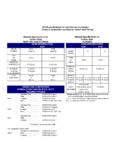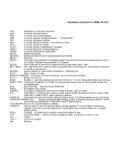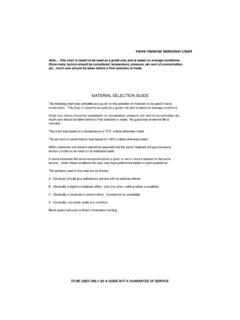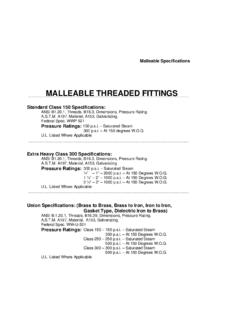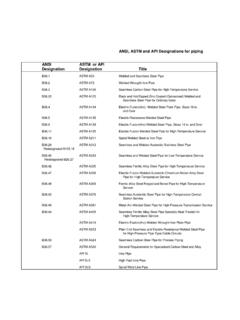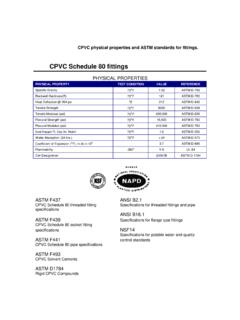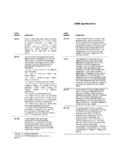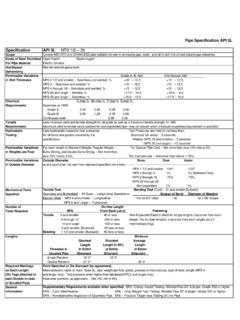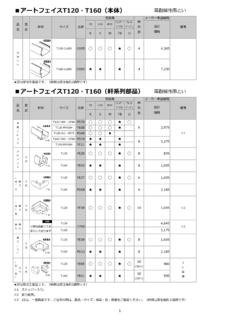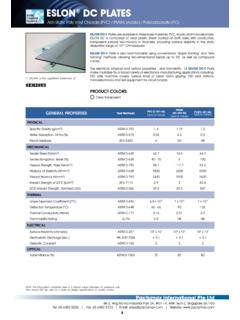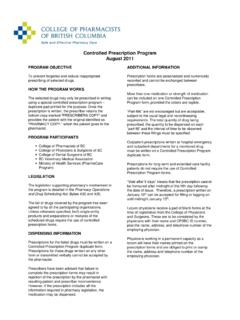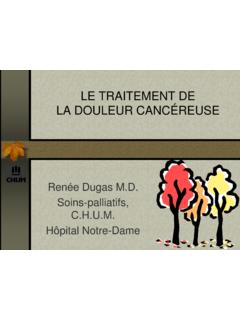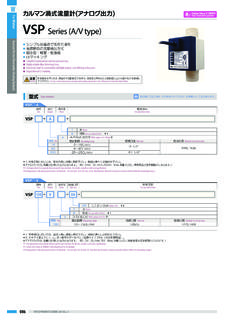Transcription of Physical Properties of PVC and CPVC
1 PVC/CPVC Physical Properties and ASTM specifications for piping Physical Properties of PVC and CPVC Poly( Vinyl Chloride) PVC Chlorinated Poly(Vinyl Chloride) CPVC This thermoplastic material is the largest volume An industrial thermoplastic piping material which can be member of the vinyl family. it is the most widely used used for higher temperature applications.
2 It is polyvinyl material for plastic pipe, valves, and fittings. chloride with additional chlorine added to reduce reac PVC has many advantages over conventional piping tio n to heat, which means advantages over regular PVC materials. Just a few are: pipe and things while retaining the excellent chemical Corrosion Resistance -outstanding chemical of PVC.
3 Resistance to nearly all acids, alkalis, alcohols, CPVC retains its mechanical strength at higher halogens and many other corrosive materials, temperatures. Fluid Friction-le ss friction loss as compared to metal- CPVC = 180 F Max. lics. Lower pressure drop smaller pumps = less PVC = 140 F Max. electricity. Eslon PVC and CPVC pipe and fittings compounds are Thermal- lower thermal conductivity than for blended according to strict industry guidelines.
4 Metallics. Less moisture condensation, reduced heat Specifications and requirements are set forth by agen loss, and more uniform fluid temperature. (Insulation is cies such as the American Society for Testing and usually not required.) Materials (ASTM) and the National Sanitation Foundation Electrical-a nonconductor of electricity. Eliminates (NSF).
5 Compliance with these standards assures the galvanic or electrolytic corrosion that causes expen- customer that they are receMng products manufactured sive repairs. from materials that will perform the tasks for which they Other-weather resistant, high strength-to-weight ratio, are designed. dent resistant, non-toxic, maintains Properties over long periods of time, easy to install, maintenance-free.
6 BASIC MATERIAL DATA PVC CPVC Base Resin Poly(vinyl chloride) Homopolymer Chlorinated Poly(vinyl chloride) Commercial Classification of Rigid Compound * Type 1, Grade 1 PVC 1120 Type IV, Grade 1 CPVC 4120 Class Designation 12454-B 23447-A *Rigid Material is also known as Un Plasticized (U-PVC) Type Pipe Standard Specifications Material Dimensions PVC SDR(Plain End) ASTM D-1784 ASTM D-2241 PVC SDR(Belled End) ASTM D-1784 ASTM D-2672 PVC Schedule 40 ASTM D-1784 ASTM D-1785 PVC Schedule 40 (DWV) ASTM D-1784 ASTM D-2665 PVC Schedule 40 (Belled End) ASTM D-1784 ASTM D-2672 PVC Schedule 80 ASTM D-1784 ASTM D-1785 CPVC Schedule 40 and 80 ASTM D-1784 ASTM F-441
